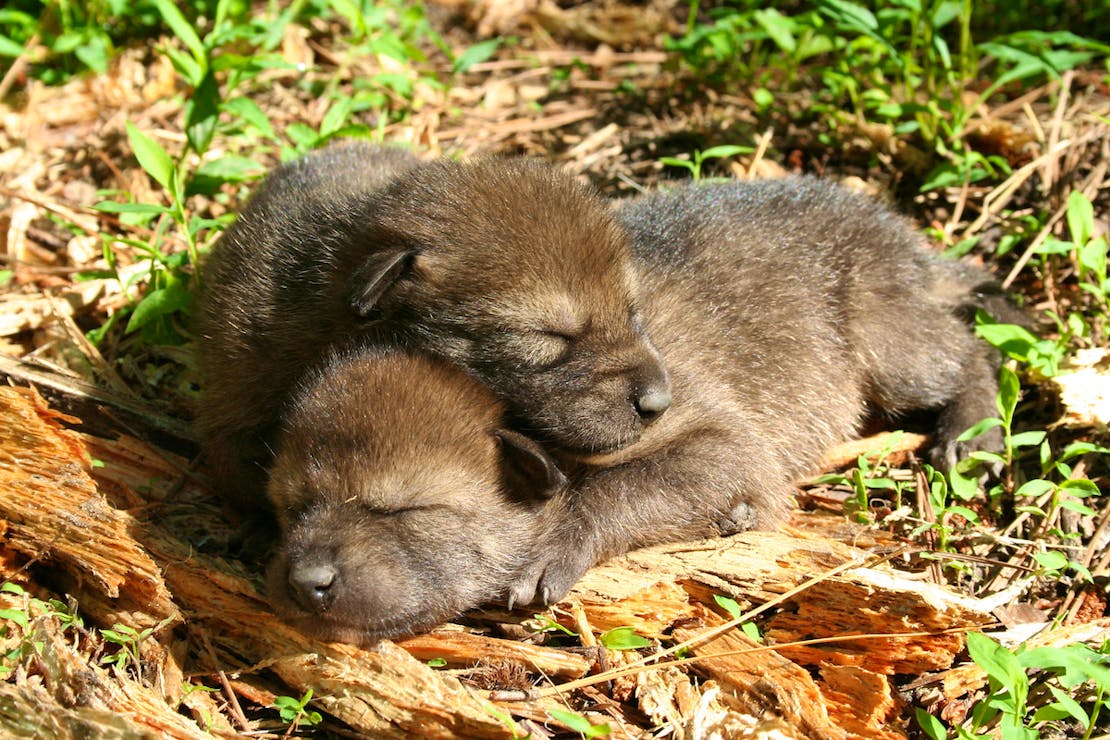When the news broke earlier this spring that a litter of Red Wolf pups had been born in the wild, I could’ve howled with joy. Red Wolves are the most critically endangered canid on the planet, so a new generation of puppies is cause for celebration.
Red Wolves are the only uniquely American species of wolf, found nowhere else on earth. Once ranging across the southeastern United States, this lanky, auburn hued canid is now clinging to existence with just a foothold in eastern North Carolina. The Red Wolf’s story is a stark reminder of our impact on the environment, but also a powerful opportunity to showcase the possibility of recovery.
In 1980, Red Wolves were declared extinct in the wild, but thanks to the Endangered Species Act, all was not lost. A captive breeding program established by the U.S. Fish and Wildlife Service reintroduced Red Wolves to North Carolina in 1987, marking the first time a large carnivore had ever been reintroduced to the wild. This historic effort provided an important model for subsequent reintroduction programs to restore gray wolves, Mexican gray wolves, California condors and black-footed ferrets.
Through the captive breeding and reintroduction program, nearly 150 individuals populated the North Carolina wilds by 2014. Tragically, this incredible progress came to a screeching halt and the population crashed due to a dramatic spike in illegal poaching and vehicle collisions, combined with devastating management failures. By 2020, as few as seven wolves were left in the wild.
My colleagues and I were determined to save this species, and in 2020 our lawyers challenged the FWS’s management failures and the agency’s illegal decision to abandon the reintroduction program. As a result of our legal action, the court ordered FWS to resume reintroductions. Pup-fostering activities then resumed as well. Following this victory, we finalized a landmark settlement in 2023 with an agreement that guarantees continued federal recovery actions, requiring annual plans to release wolves into the wild to give this species hope for long-term recovery.
This spring marks the third consecutive year of wild-born pups — a key indication that this endangered species is once again headed in the right direction. What made this year’s births even more exciting was that the breeding female of this pack bred with a new male. Her previous mate was struck by a vehicle in the fall of 2023 and succumbed to injuries. Because wolves must pair-bond before mating, it was unclear if she would take a new partner in time to breed successfully this season. These new pups not only carry the promise of a lasting future, but they also provide genetic diversity for a population of less than 25 wild wolves.
Recovering a near-extinct species like the Red Wolf is more than a story of hope; it can restore an imbalanced ecosystem. Red Wolves are a keystone species, keeping prey populations, like nest predators and rodents, in check, and maintaining ecological balance that benefits a whole host of plants and animals. Their absence can lead to cascading disruptions, harming biodiversity and the overall health of our wild spaces.
I’m so proud of the progress we’re making in Red Wolf conservation, but there is still a lot of work ahead to ensure meaningful progress continues and this species receives the support and protections needed to achieve long-term recovery. My colleagues and I are focused on expanding our community outreach activities to raise awareness about Red Wolves, promote coexistence and foster appreciation and pride in the recovery of this keystone species. Our newly launched coexistence website provides valuable information about nonlethal conflict mitigation and how to access support and resources, including our coexistence toolkits, to help residents share the landscape with wildlife in the Southeast.
While we are howling with excitement over the news of new pups, the Red Wolf's howl is a call to action. It's a call to recognize the importance of healthy ecosystems, to embrace innovative solutions, and to become responsible stewards of our natural heritage. Let's ensure that the echo of the Red Wolf continues to resonate through our forests, fields, and swamps for generations to come.








